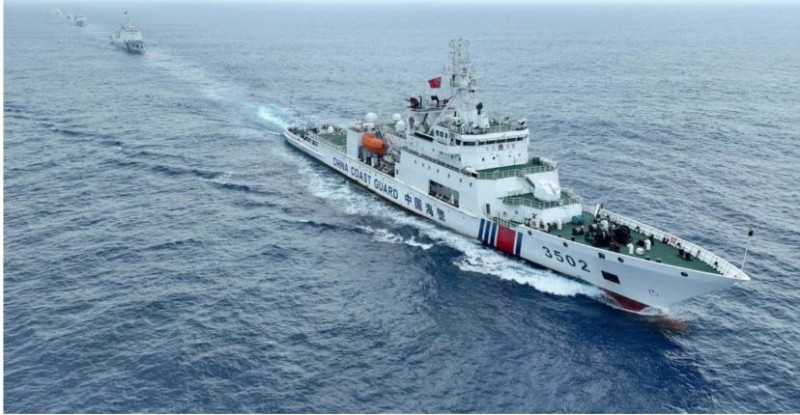
China announced a major addition to its naval fleet, the Type 076 drone carrier, marking the world's first of its kind. Currently being built at the Changxing Island Shipbuilding Base, this Yulan-class Landing Helicopter Assault (LHA) ship is set to significantly enhance China’s amphibious warfare capabilities. The deployment of the Type 076 could have profound implications for regional security, particularly for Taiwan and in the contested South China Sea.
Innovative Technology in the Type 076
What sets the Type 076 apart is its state-of-the-art catapult system, similar to the Electromagnetic Aircraft Launch System (EMALS) used by the US Navy’s Ford-class carriers. This technology allows for the rapid and efficient launch of Vertical/Short Takeoff and Landing (V/STOL) aircraft, such as the F-35B fighter jets. Unlike traditional amphibious assault ships, the integration of EMALS in the Type 076 signals a new era of air support for amphibious operations, enabling more flexible and faster deployment of aerial forces.
Strategic Implications for Taiwan and the South China Sea
The introduction of the Type 076 could have significant strategic consequences. Its ability to deploy unmanned aerial vehicles (UAVs) for a variety of missions—such as reconnaissance, electronic warfare, and direct strikes—could bolster China’s military operations in areas like Taiwan. This technological advance will enhance China’s capacity to conduct complex military actions and could potentially disrupt adversarial defenses, particularly in large-scale amphibious assaults.
In the South China Sea, where China faces territorial disputes with neighboring countries like the Philippines, the Type 076 could serve as a critical asset in asserting control over contested waters. Its presence could tilt the power dynamics in favor of China, allowing it to maintain a stronghold in high-tension regions like the Second Thomas Shoal.
A Global Comparison of Naval Power
The unveiling of the Type 076 drone carrier underscores China's ambitions to challenge other naval powers. While the United States boasts advanced drone and carrier technology, such as the MQ-25 Stingray, these assets are primarily focused on traditional aircraft carriers. Other nations like the UK and France also possess highly developed carriers, but none have integrated drone-launching capabilities on a scale comparable to the Type 076. Even in the Indo-Pacific region, countries like Japan and South Korea, despite their ongoing naval modernization, have yet to develop dedicated platforms for drone operations within amphibious contexts.
Impact on Regional Military Strategies
The launch of the Type 076 may compel Indo-Pacific nations, especially those with conflicting interests in the South China Sea or close ties to Taiwan—such as Japan, Australia, and India—to rethink their military strategies. These nations may accelerate their naval modernization efforts or strengthen strategic partnerships to offset China's growing naval power. The Type 076 could become a critical factor in reshaping regional security and military dynamics.
China’s "Mothership" and Emerging Speculations
Beyond the Type 076, China has also introduced a concept for a new large "mothership" to support its coast guard operations. Announced on August 8 by China’s 708th Shipbuilding Research Institute, this ship is expected to either serve as an aircraft carrier or drone platform. Although its precise role remains unclear, this new vessel is designed to improve China’s coast guard presence in distant seas. A former US Navy intelligence officer, John Michael Dahm, noted that the size and displacement of a vessel like this often indicate enhanced capabilities in terms of personnel, weapons, fuel, endurance, and operational range.
Dahm further remarked that China may be exploring a range of options with the new "mothership." Its design could align with China’s Belt and Road Initiative by increasing its influence in the South Pacific and Southeast Asia. However, the effectiveness of such a vessel would depend on China’s ability to maintain and support long-range operations through a network of ports and supply points.